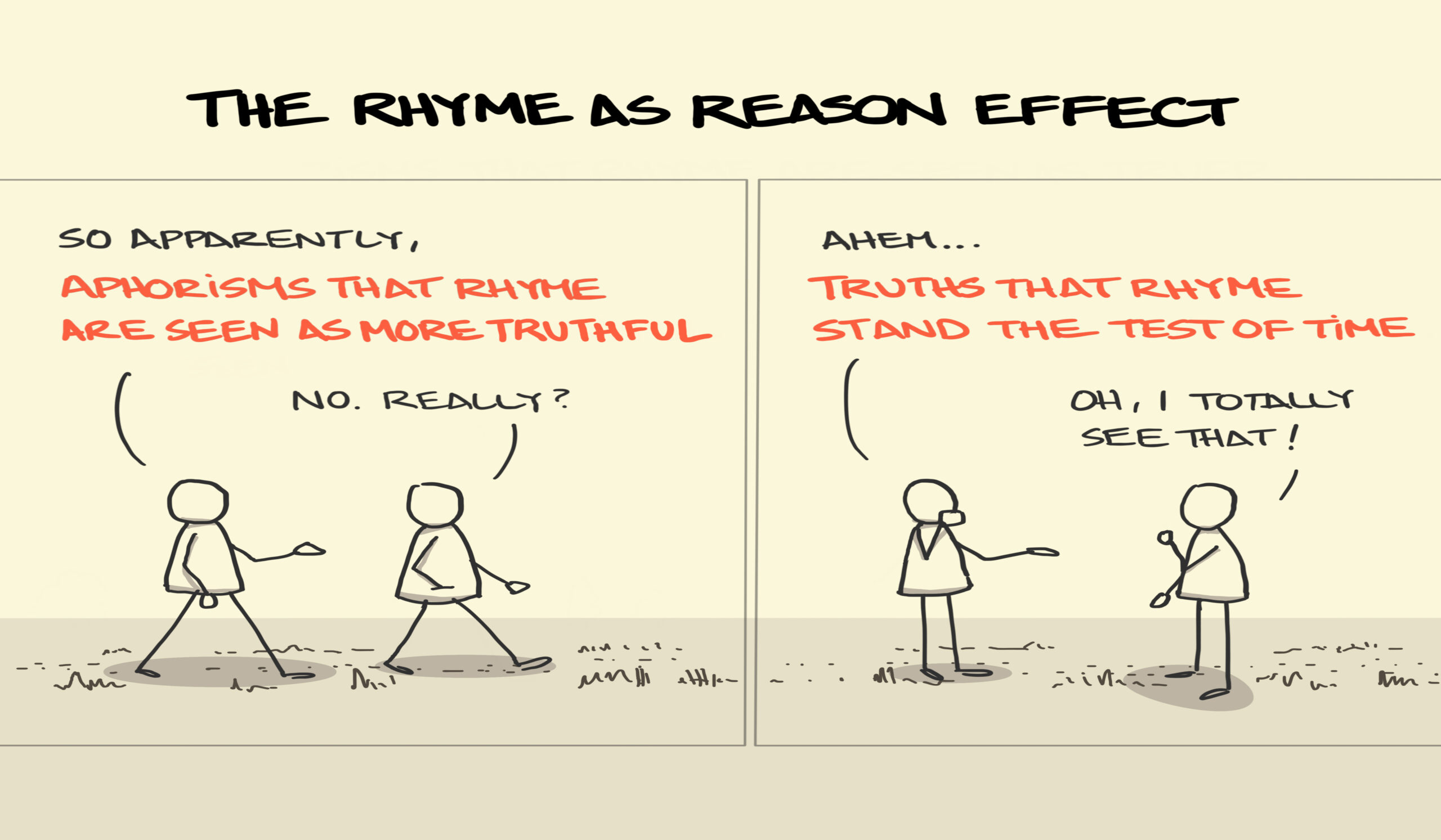The Rhyme as Reason Effect is a cognitive bias that occurs when individuals perceive information as more accurate or true if it rhymes or is presented in a rhyming form. People tend to find rhyming statements more appealing and credible, even when the content itself may lack validity.
Explanations:
The Rhyme as Reason Effect is linked to the psychology of memorability and aesthetics. Rhyming statements are often easier to remember and sound more appealing, leading individuals to perceive them as more accurate.
Examples:
Advertising Slogans: Companies often use catchy, rhyming slogans in their advertising campaigns to make their products or services more memorable and appealing.
Political Messaging: Politicians may use rhyming phrases or slogans to make their messages stick with voters, regardless of the actual substance of the message.
Educational Rhymes: Educational materials for children often use rhyming content to help them remember facts, but the content’s accuracy can vary.
Solutions:
Critical Evaluation: Encourage critical evaluation of information, especially when it’s presented in a rhyming form, to assess its accuracy independently.
Fact-Checking: Utilize fact-checking and verification methods to ensure the validity of information, regardless of its presentation.
Awareness of Bias: Be aware of the Rhyme as Reason Effect and how it can influence perceptions of information.
Balanced Consideration: Consider both the content and the presentation when assessing the credibility of information.
Addressing the Rhyme as Reason Effect involves recognizing the inclination to perceive rhyming information as more accurate and appealing and actively promoting critical evaluation, fact-checking, awareness of the bias, and balanced consideration to assess the credibility of information based on its content, not just its form.
